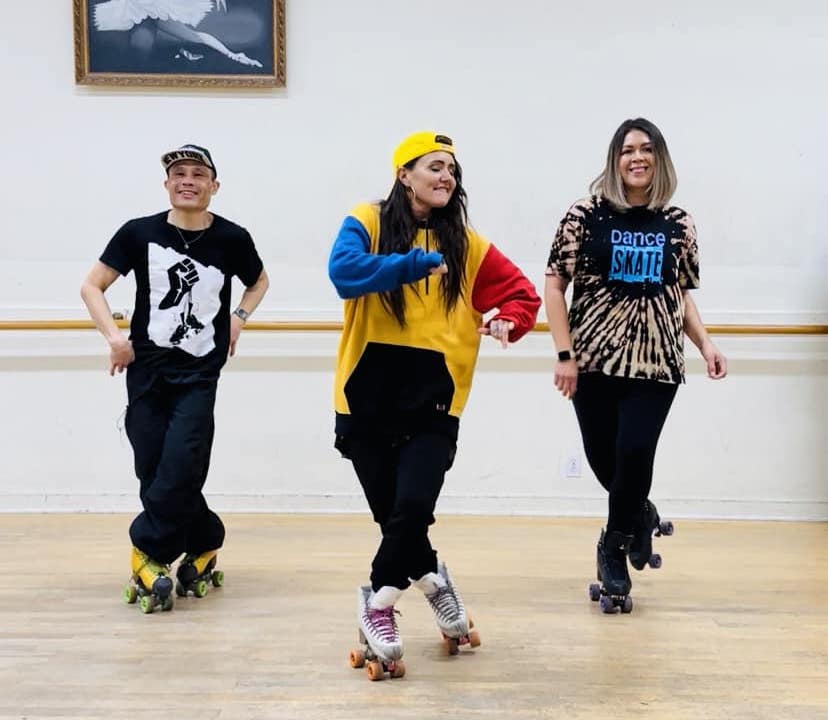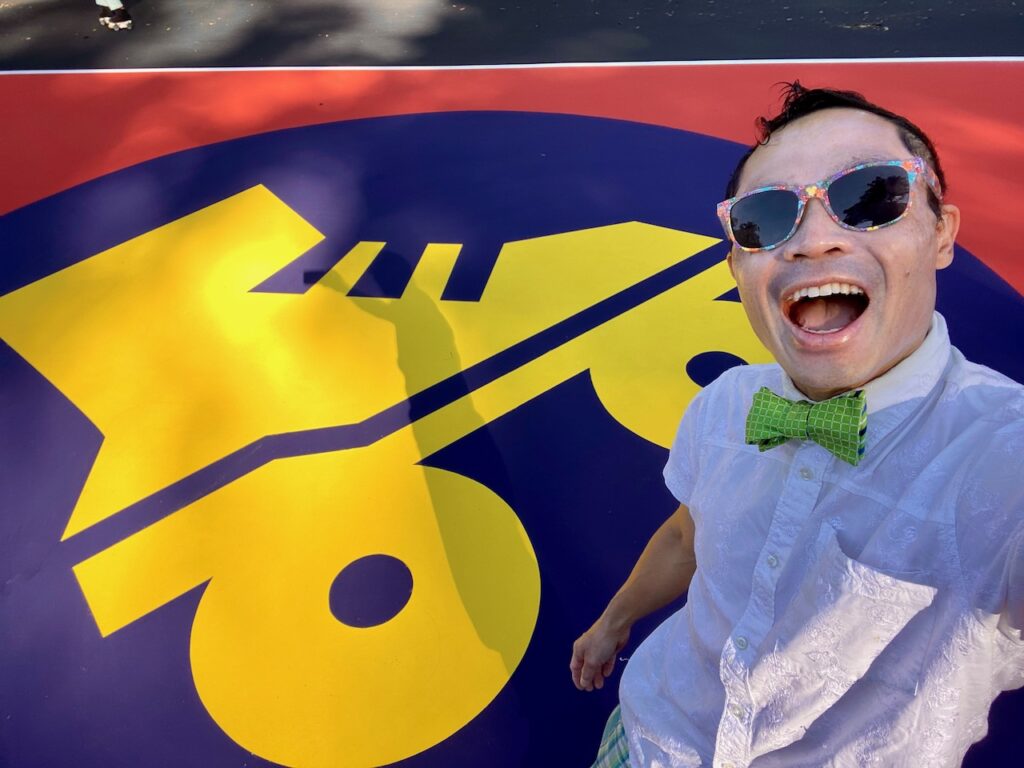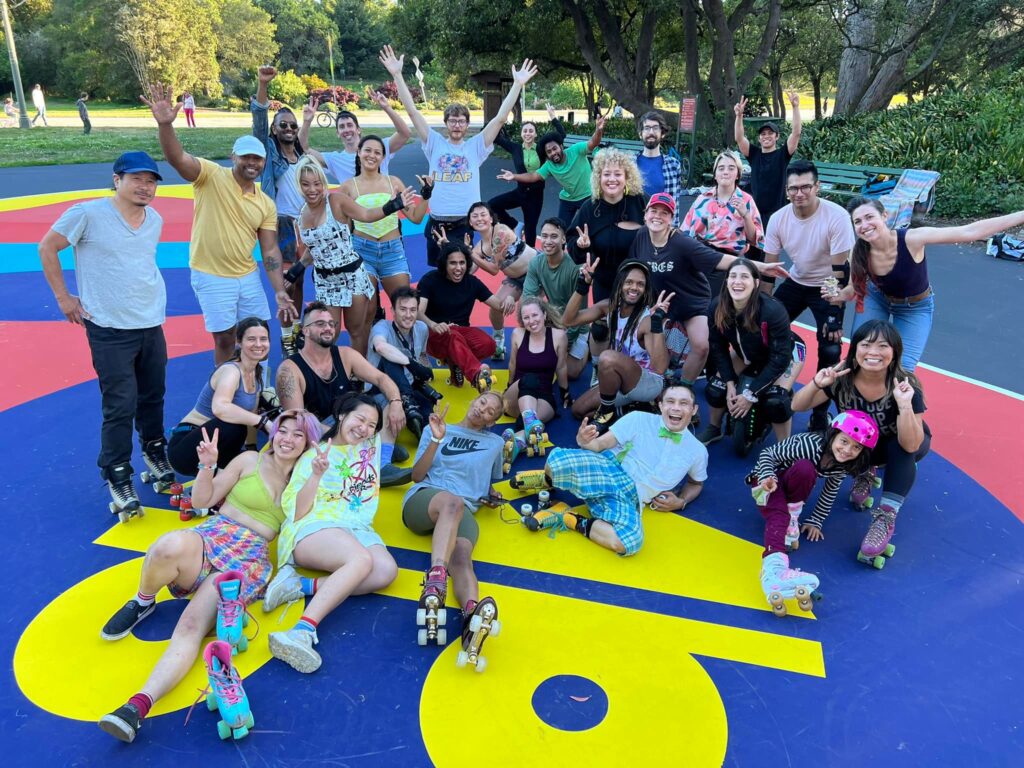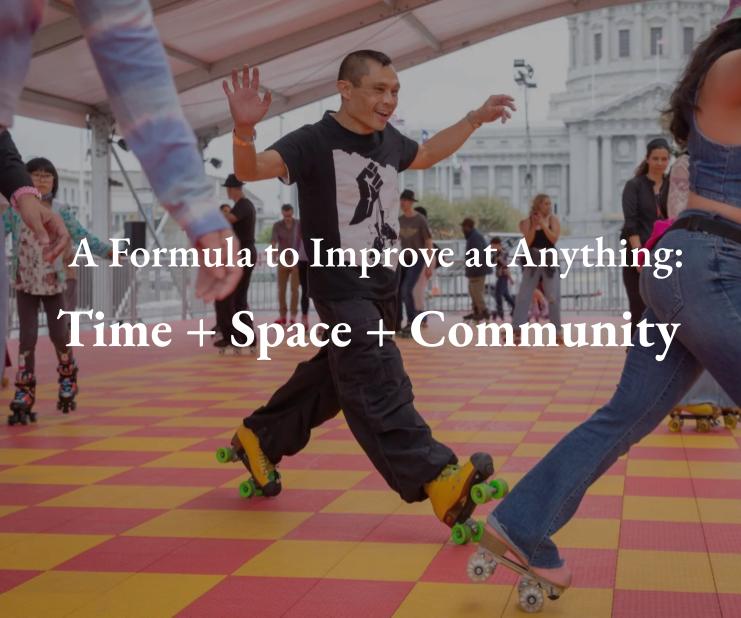I’ve been thinking about skate dancing and my progress over the nearly three years that I’ve been practicing this art form. Of the many dances I’ve practiced, rhythm / jam skating is one that I have progressed the fastest. Not that I am an “expert” by any means, but I feel like my level of proficiency has gone up far quicker than anything else I have ever done before.
I’ve started thinking about why that is so. I suspect it comes down to a combination of a few critical factors:
- Time
- Active Learning Time
- Space
- Community
- Pre-existing Strengths and Skills
I believe all of these contributed to my learning curve being steeper than my normal rate. To get into this a little deeper, let’s compare and contrast rhythm skating with two other forms I practice — lindy hop and breaking / b-boying.
Time

To get better at anything, you need to spend the time doing the thing. (10,000 hours to mastery, yada yada.)
When I first started lindy hopping in 1998, I spent most of my free time absorbed in it. In the first few years, I estimate that I was spending around 576 hours a year dancing lindy hop:
- 4-5 sessions (1 class + 3-4 social dances) a week at around 3-4 hours a session = 12 hours a week
- 12 x 4 x 12 = 576 hours a year
That was at the beginning of my lindy hop journey in NYC, which lasted maybe 6-8 years. That drastically went down after that for a variety of reasons. But for a lot of my 30s and 40s, I was still dancing 2-3 nights a week.
I actively practiced breaking for about 5 years starting around 2007. I estimate my time commitment at around 288 hours a year:
- 3-4 sessions a week at around 2 hours each = 6 hours a week
- 6 x 4 x 12 = 288 hours a year
Now let’s look at skating. I put my time spent at about 432 hours a year skating over the past three years:
- 3-4 sessions a week at around 3 hours a sessions = 9 hours a week
- 9 x 4 x 12 = 432 hours a year
So just based on time spent dancing alone, it seems clear why I’m more adept at skating and lindy hop than breaking. But there’s a lot more to it.
Active Learning Time

Not all time is created equal. You can spend 10 years practicing bad habits and you won’t progress in your discipline, and in fact you will get worse over time. So the time spent actively learning new skills and refining current ones is an important factor.
While I have done lindy hop the longest, not all of that time was spent in active learning. Even during the height of my lindy hop craze, I was only in a learning setting for small portions of that time — e.g. in a class, at a practice session, or working on something alone or with a partner.
Most of my time “swing dancing” I was in a club or other informal dance venue. That time was split between hanging out with friends, observing the dancing and live music, and actually dancing. And most of the time dancing was spent just repeating moves that I already knew, rather than practicing new moves or learning something from others.
As a breaker, I took one class a week, and would stay after to drill moves and skills I was working on. I would practice on my own a couple times a week, and sometimes would go to a practice session at the studio. For me breaking wasn’t something I did in any social settings like a club or a party or with a crew.
With skating, I spent a significant amount of my time actively learning, from 50% to 80% per session. I practice new moves, drill ones I already know, watch others and mimic them, and poring over instructional videos for hours.
Space

Having a space to dance is critical.
Lindy hop is a partnered dance that I practiced in a class setting or a dance venue. So to work on it, I had to go to a particular place at a particular time, pay a class fee or cover charge, and hope that there was someone there I could dance with. All those factors made it harder to improve.
Breaking I could practice in my home, at the risk of running into furniture and knocking things over. But mostly I practiced breaking in a class setting or an open practice session in a studio.
Fortunately with skating, I live close to a large outdoor rink, the Sixth Avenue Skating Place in Golden Gate Park. In just a few minutes on my bike, weather permitting, I can be skating alone or with others. And during the height of the pandemic, I would go every day to the rink to practice for an hour or two.
I also have a small practice floor in my apartment to drill moves that don’t require much space.
Most skaters don’t have this luxury. They might have a local rink that they go to once a week for a couple of hours. Or they skate at a tennis or basketball court on occasion.
Community

Being around other people practicing your art is huge!
Lindy hop has been a central community for me for the past 25 years. Many of the friends I made when I first started lindy hopping in 1998 I am still connected to, even if most of them don’t dance anymore. And I have kept accruing more and more friendships and connections over the years. I am connected to hundreds of people all around the world because of lindy hop.
Breaking never really brought me that same level of connection or community. I have a few friends that I made at the studio, but very few beyond there. My breaking journey was much more solitary, which is definitely a factor in my not progressing very far.
Fortunately, the San Francisco Bay Area has multiple thriving and diverse skate communities. I’m most active among skaters who frequent the 6th Avenue rink, but I’m connected to many other skaters all over the Bay Area. And social media has brought me closer to many more skaters around the country.
Being among awesome people who are willing to share knowledge, encourage me, and to help solve problems has been a huge part of why I’ve stuck with rhythm skating for so long. I definitely would not have kept doing it if I didn’t have such a great crew of friends who love skating as much as I do.
Pre-existing Strengths and Skills
Even with time, space and community, there are some pre-existing conditions that make it more likely that you are going to excel at something.
With lindy hop, I didn’t have much to bring to the table at the beginning. I didn’t know anything about jazz or how that music was structure. I had never partner danced. Counting out steps was foreign to me.
With breaking, I understood and loved the music, and I had some experience messing around with hip-hop movement. And I had prior martial arts training that made spinning, jumping, and rolling around feel somewhat familiar.
There were a ton of experiences that prepared me for skating — breaking, house dance, martial arts, and rock climbing notably. Studying other dances taught me about the importance of drilling, practice, and focus. I already knew something about how to watch someone else do something and translate that into something that I can attempt. And I have knowledge about how I learn best (understanding the larger structure of a move before getting into the details, being given small chunks of knowledge that I can build on, allowing me to kinesthetically experience something instead of lecturing me).
Being comfortable with falling is essential to progressing in skating. At the beginning, you fall a lot. Fortunately, I’m very comfortable with falling and don’t fear it at all. I know that isn’t the reality for a lot of other people, particularly older folks and those with pre-existing health issues.
There isn’t a precise formula for success. But I do believe that time + space + community + pre-existing strengths are all important factors in whether you will excel at most anything. It certainly has been the case for me and skating.
The one factor that probably underlies all of this is motivation. You need to desire to improve, to “succeed” at your art, however you define that. At the end of the day, I didn’t really care that much about being an “advanced” level lindy hopper — I just wanted to dance and have fun with my friends. As a breaker, I had no strong desire to perform the hardest tricks, win battles or own a cypher — it just seemed like a neat skill to have.
Rhythm skating is something I’m passionate about and deeply desire to get better at. It fills me with joy to unlock a new move, to throw down in a cypher, to perform choreo with others, to wow the onlookers at the park. It feels good to take on new challenges, overcome them, and share my progress with my community. I feel like I am just getting started.
Today, I am working on one foot spins, cork screws, and the “back step” line dance. Next month it will probably be something completely different. And that’s incredible exciting.
